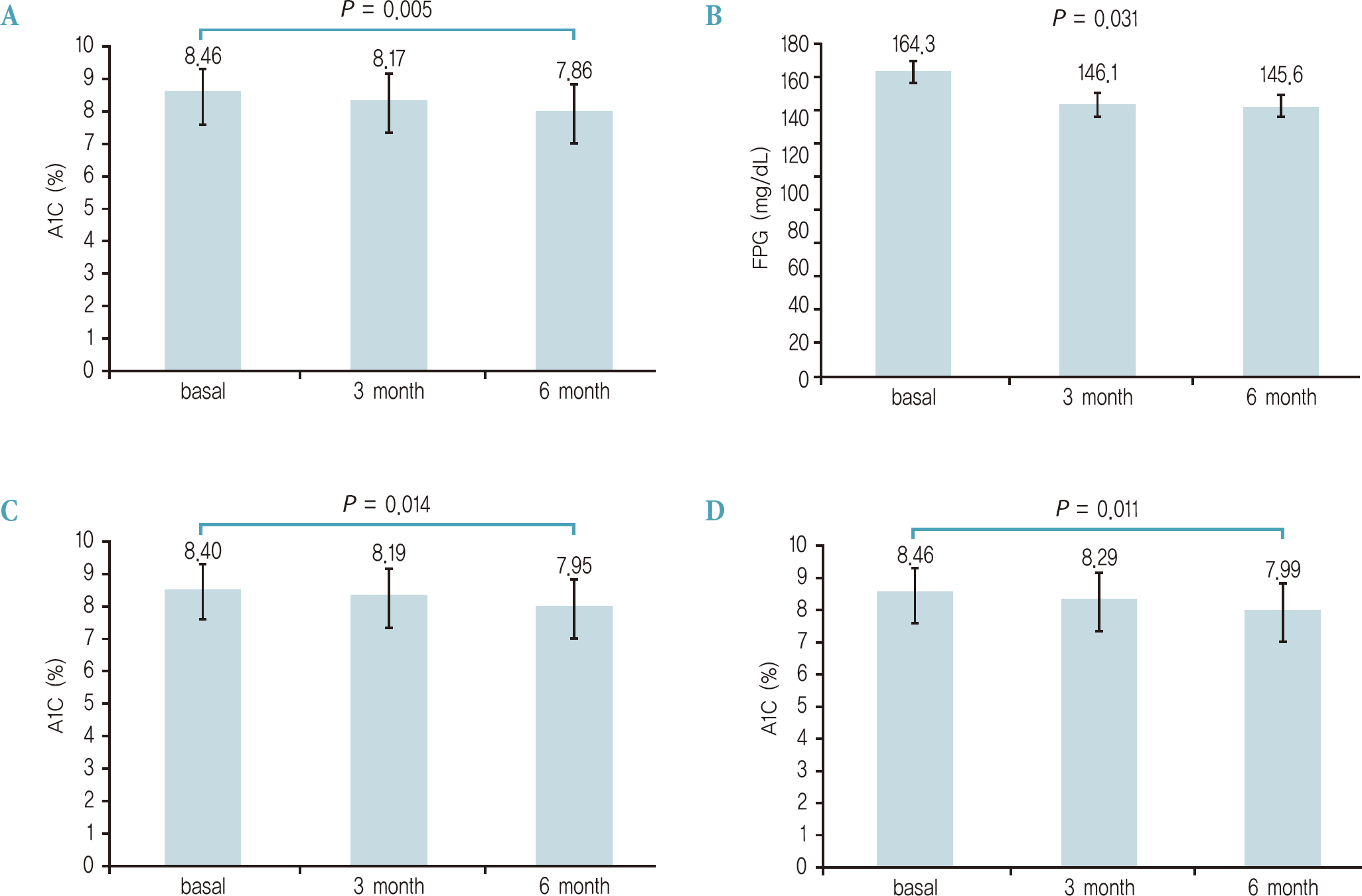1. YkiJärvinen H. Thiazolidinediones. N Engl J Med. 2004; 351:1106–18.

2. Inzucchi SE, Bergenstal RM, Buse JB, Diamant M, Ferrannini E, Nauck M, Peters AL, Tsapas A, Wender R, Matthews DR. Management of hyperglycemia in type 2 diabetes, 2015: a patient-centered approach: update to a position statement of the American Diabetes Association and the European Association for the Study of Diabetes. Diabetes Care. 2015; 38:140–9.

3. Ko SH, Kim SR, Kim DJ, Oh SJ, Lee HJ, Shim KH, Woo MH, Kim JY, Kim NH, Kim JT, Kim CH, Kim HJ, Jeong IK, Hong EK, Cho JH, Mok JO, Yoon KH. Committee of Clinical Practice Guidelines, Korean Diabetes Association. 2011 clinical practice guidelines for type 2 diabetes in Korea. Diabetes Metab J. 2011; 35:431–6.

4. Schwartz S, Raskin P, Fonseca V, Graveline JF. Effect of troglitazone in insulin-treated patients with type II diabetes mellitus. Troglitazone and Exogenous Insulin Study Group. N Engl J Med. 1998; 338:861–6.
5. Inzucchi SE, Maggs DG, Spollett GR, Page SL, Rife FS, Walton V, Shulman GI. Efficacy and metabolic effects of metformin and troglitazone in type II diabetes mellitus. N Engl J Med. 1998; 338:867–72.

6. Fonseca V, Rosenstock J, Patwardhan R, Salzman A. Effect of metformin and rosiglitazone combination therapy in patients with type 2 diabetes mellitus: a randomized controlled trial. JAMA. 2000; 283:1695–702.
7. Horton ES, Whitehouse F, Ghazzi MN, Venable TC, Whitcomb RW. The Troglitazone Study Group. Troglitazone in combination with sulfonylurea restores glycemic control in patients with type 2 diabetes. Diabetes Care. 1998; 21:1462–9.

8. Raskin P, Rendell M, Riddle MC, Dole JF, Freed MI, Rosenstock J. Rosiglitazone Clinical Trials Study Group. A randomized trial of rosiglitazone therapy in patients with inadequately controlled insulin-treated type 2 diabetes. Diabetes Care. 2001; 24:1226–32.

9. Kipnes MS, Krosnick A, Rendell MS, Egan JW, Mathisen AL, Schneider RL. Pioglitazone hydrochloride in combination with sulfonylurea therapy improves glycemic control in patients with type 2 diabetes mellitus: a randomized, placebo-controlled study. Am J Med. 2001; 111:10–7.

10. Hiroi S, Sugiura K, Matsuno K, Hirayama M, Kuriyama K, Kaku K, Kawakami K. A multicenter, phase III evaluation of the efficacy and safety of a new fixed-dose pioglitazone/glimepiride combination tablet in Japanese patients with type 2 diabetes. Diabetes Technol Ther. 2013; 15:158–65.

11. Park Y, Lee H, Koh CS, Min H, Zimmet PZ, Rowley MJ, Mackay IR, Trucco M, Dorman JS. Low prevalence of immunogenetic markers of IDDM in adult Koreans with diabetes detected on OGTT. Diabetes Res Clin Pract. 1996; 34(Suppl):S37–43.

12. Abe M, Kikuchi F, Okada K, Kaizu K, Matsumoto K. Efficacy of pioglitazone on type 2 diabetic patients with hemodialysis. Diabetes Res Clin Pract. 2008; 80:432–8.

13. Aronoff S, Rosenblatt S, Braithwaite S, Egan JW, Mathisen AL, Schneider RL. The Pioglitazone 001 Study Group. Pioglitazone hydrochloride monotherapy improves glycemic control in the treatment of patients with type 2 diabetes: a 6-month randomized placebo-controlled doseresponse study. Diabetes Care. 2000; 23:1605–11.
14. Henry RR, Staels B, Fonseca VA, Chou MZ, Teng R, Golm GT, Langdon RB, Kaufman KD, Steinberg H, Goldstein BJ. Efficacy and safety of initial combination treatment with sitagliptin and pioglitazone: a factorial study. Diabetes Obes Metab. 2014; 16:223–30.
15. Kutoh E. Differential regulations of lipid profiles between Japanese responders and nonresponders treated with pioglitazone. Postgrad Med. 2011; 123:45–52.

16. Tajiri Y, Takei R, Mimura K, Umeda F. Indicators for the efficacy of pioglitazone before and during treatment in Japanese patients with type 2 diabetes. Diabetes Technol Ther. 2007; 9:429–37.

17. Igarashi M, Jimbu Y, Kimura M, Hirata A, Yamaguchi H, Tominaga M. Effect of pioglitazone on atherogenic outcomes in type 2 diabetic patients: a comparison of responders and nonresponders. Diabetes Res Clin Pract. 2007; 77:389–98.






 PDF
PDF ePub
ePub Citation
Citation Print
Print


 XML Download
XML Download